
views
Step Flashing

Use a 10 in (25 cm) by 7 in (18 cm) piece of thin metal for flashing. Copper, lead, and galvanized steel are the best types of metal for flashing. The exact thickness doesn’t matter, as long as you can bend it easily by hand. Step flashing are pieces of flashing bent in half at 90-degree angles for where the shingles of a roof meet a sloped wall, such as the wall of a chimney or the siding of a room that juts out of the roof. Step flashing is the main type of flashing you need to bend. Using pieces that are 10 in (25 cm) long allows you to have 5 in (13 cm) of metal on the wall and 5 in (13 cm) of metal on the roof when you install the bent step flashing. The 7 in (18 cm) length allows for a 2 in (5.1 cm) overlap between pieces of flashing.

Bend 1 piece of step flashing for every row of shingles along the wall. Count the number of rows of shingles that meet the wall you want to direct water away from. This is how many pieces of step flashing you need to create proper drainage away from the siding and off the shingles. For example, if there are 10 rows of shingles that meet the wall of a chimney, bend 10 pieces of step flashing to line that wall.
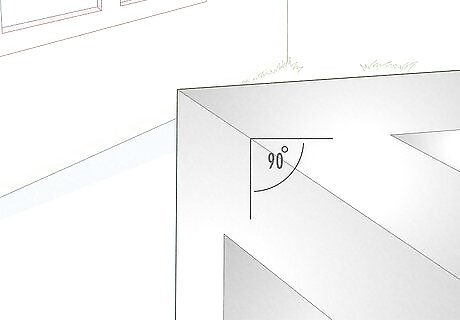
Find a flat surface with a 90-degree corner or edge. Look for something like a wall or a piece of plywood. Make sure the surface is stable and completely flat. For example, you could prop a sheet of plywood up against something and use the edge of the plywood to bend your step flashing. You could also use a large straight edge, such as a carpenter’s level or square, to bend the flashing around.
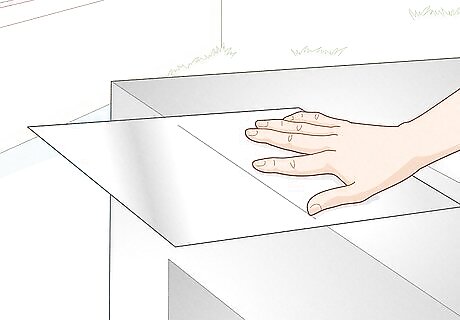
Line up the middle of the metal lengthwise along the corner or edge. Place the piece of flashing you want to bend flat against the surface. Slide half of it off the surface, so there are approximately 5 in (13 cm) of metal hanging off the corner or edge of the surface. Make sure the piece of metal is lined up perfectly straight before you bend it. Mark the middle line with a pencil and a straight edge if you aren’t sure you can eyeball it correctly.
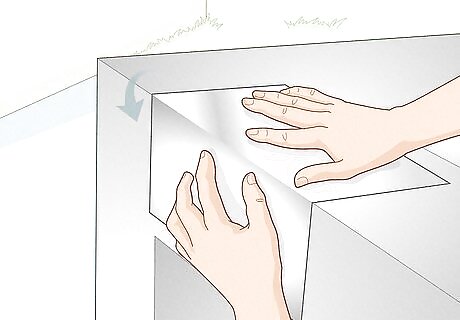
Push the metal around the corner or edge to form a 90-degree bend. Press 1 palm firmly against the metal where it sits against the surface to hold it steady. Use your other hand to push the other side of the metal all the way around the corner until it’s bent at a 90-degree angle down the middle. This makes a sharp crease down the middle, which ensures a good fit and seal where you install the flashing. Don’t try to bend flashing freely by hand. This creates a rounded crease down the middle, which means there will be more space behind the flashing when it’s installed.
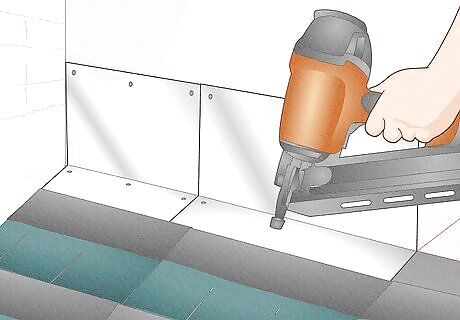
Install the flashing along the siding of a sloped wall where the shingles meet it. Work your way up from the bottom of the wall. Put a piece of step flashing under each shingle that meets the wall and overlap adjacent pieces of step flashing by 2 in (5.1 cm). Nail each piece of step flashing to the roof with 2 galvanized roofing nails and a hammer or nail gun. Always start with the piece of step flashing at the bottom of the slope so that subsequent pieces of flashing overlap the piece below. That way, water rolls down them without penetrating cracks and finding its way into the roof.
Kickout Flashing

Clamp a piece of step flashing in the middle of 1 side with needle-nose pliers. Use a pair of needle-nose pliers that has jaws which are at least 5 in (13 cm) long. Slide the jaws horizontally over 1 side of the bent flashing, perpendicular to the bend and in the center of the flat surface, so the tips of the pliers reach the bend. Kickout flashing goes at the end of a row of step flashing that reaches the edge of the roof. It’s bent into a corner of sorts, so as to direct water away from the siding. You only need 1 piece of kickout flashing per row of step flashing.

Twist the pliers to 1 side to create a loose fold in the middle of the flashing. Grip the handle tightly to keep the metal tightly clamped between the jaws. Roll your wrist to the left or right to fold 1 side of the metal over the other and create a bend. Twist the pliers to the left if you want to bend the kickout flashing for a left-hand wall and vice versa if you want to bend the flashing for a right-hand wall.

Adjust the angle of the kickout flashing with pliers or a gloved hand. Overlap the metal more if you want a sharper angle. Unfold the metal slightly if your want less of an angle. The angle you use depends on where you want water to drain off the roof. You can adjust it to direct water towards a gutter, for example. Make sure not to fully crease the folds in the metal until you’re done adjusting the angle.

Press a wood block down on the fold to flatten the creases. Put the flat end of a block of wood directly on top of the folded metal. Push it down firmly until the metal is full flattened. Use a hammer or a mallet to hammer on the wood block if it’s easier.
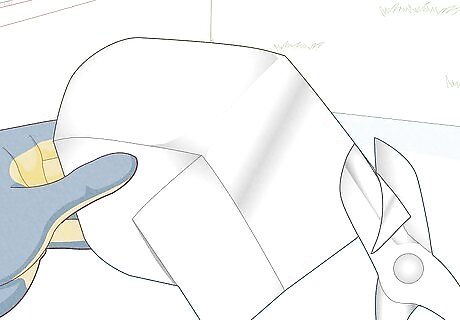
Trim the end that goes against the wall into a round shape with metal snips. Start at the bottom corner and cut into the side of the metal that goes against the wall. Cut along to metal to the top corner, curving your cut slightly as you go, to make a rounded end. This is purely aesthetic, so feel free to skip this step if you want to. It doesn’t matter how curved or rounded you make the cut. It’s totally up to you, so just do whatever looks nice in your opinion.
















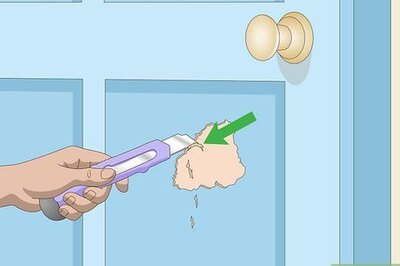

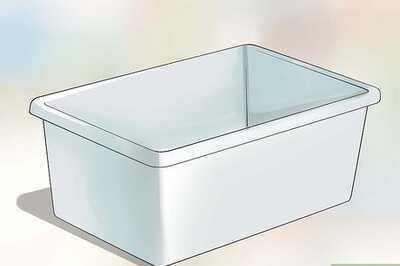
Comments
0 comment